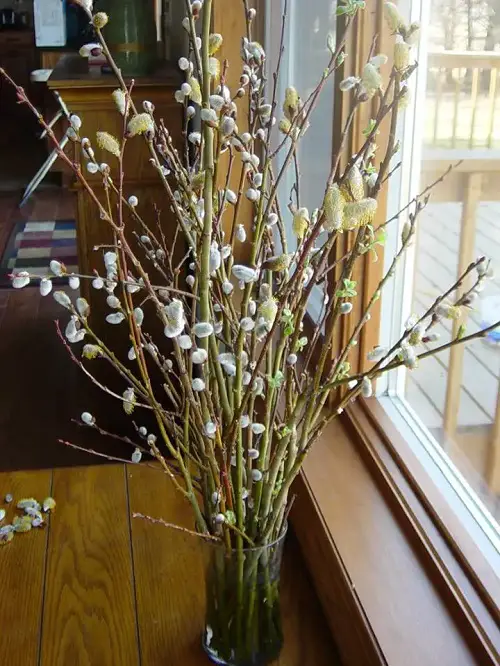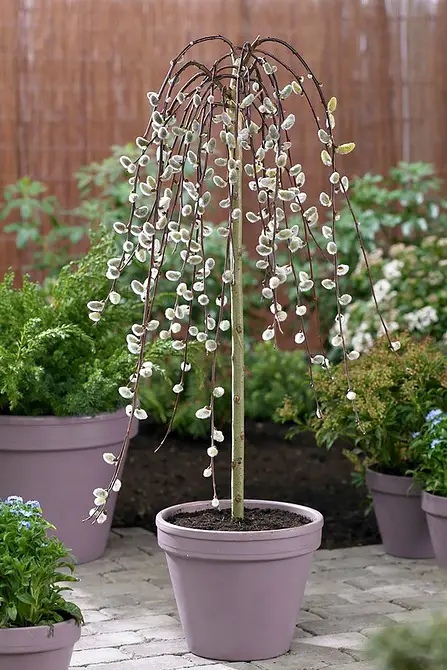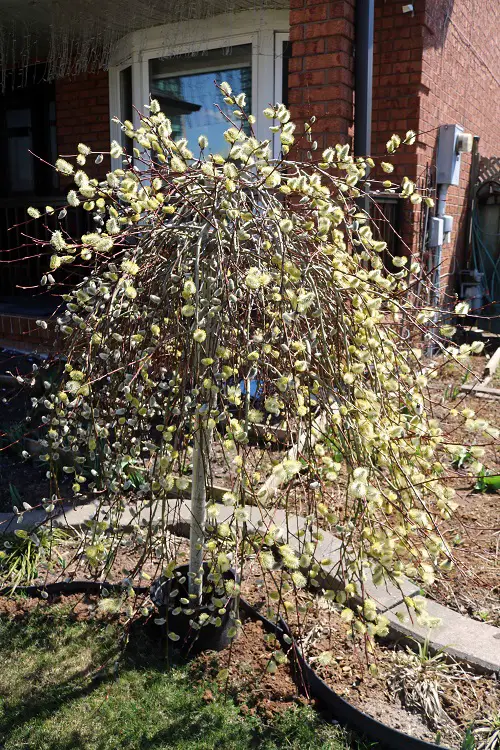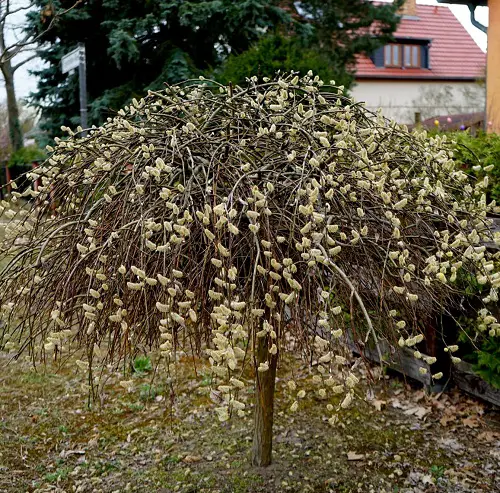Learn here everything about Growing Pussy Willow with easy tips and techniques that both a beginner and experienced gardener can follow.
Pussy Willow is a popular shrub known for its soft and fuzzy catkins that appear in early spring. While this is typically found in wild wetlands, don’t worry! You can grow it in your yards by providing essential conditions and pruning!
What is Pussy Willow?
The Pussy Willow (Salix spp.) is a deciduous shrub native to North America, Europe, and Asia. It grows quickly, up to 6-25 feet tall and 4-15 feet wide in 4–8 (USDA). It has flexible branches and catkins that look like cat paws.
Many people associate these plants with the arrival of spring, and they are commonly used in floral arrangements. Also, in some cultures, they symbolize renewal, fertility, and good fortune.
Types of Pussy Willow
Here are some popular and commonly cultivated varieties:
- Salix caprea: This is also known as goat willow.
- Salix purpurea ‘Nana’: It is a dwarf variety that produces small, round, purple catkins. It is suitable for smaller gardens or containers.
- Salix caprea pendula: A beautiful weeping pussy willow that is used as a ground cover instead an upright bush.
- Salix cinerea: Known for its invasive nature, it is unfit for being a garden plant.
Read here about Best Types of Pussy Willow
Propagating Pussy Willow

When propagating pussy willows, you can do this by either stem cutting or by planting seeds. However, the easiest and fastest method to grow it is stem cutting:
- You must start by selecting a healthy branch in early spring and cutting a 12-inch pencil-thick section at an angle. Remove the lower leaves from the cuttings, leaving oncly a few leaves at the tip.
- Now, you have two rooting options: either place the cutting in a glass of water and wait for roots to form, or plant it directly in moist soil.
- Once the cutting has developed roots, transplant it to a sunny location with well-draining soil. Also, the soil can be improved with compost or peat.
- Plant the cutting firmly in the ground with the help of a flat piece of wood to gently tap the cutting deeper into the soil to prevent stem damage and water it thoroughly.
Note: Always ensure the soil remains moist, especially during dry spells, and look for new growth as a sign that the plant is establishing.
Growing Pussy Willows in Pots
Growing pussy willows in pots is an easy task! You only have to select a large pot with adequate growth space and good drainage to prevent waterlogging. Then, fill the pot with any standard potting mix and place it outdoors. Also, it needs regular watering – mainly if grown in pots (more than in the ground).
Tip: The pussy willow thrives well outside than indoors. But in winter, move the pot to a sheltered area to protect your plant from extreme conditions. Also, be ready to repot it every few years as they grow quickly – always go for one size bigger pot than the previous one!
Requirements for Growing Pussy Willow

Sunlight
Pussy willows love full sun but can tolerate some shade as well, especially in hotter regions.
Watering
These plants need a constant water supply and constantly damp soil. The watering frequency depends highly on factors like temperature, the moisture retention capacity of the soil, and humidity. You can also read here for the best ways to water plants.
Soil
Pussy willow can easily grow in loamy, moist, rich, well-draining soil as long as it is consistently wet. Also, if provided poorly drained soil, then you can see the direct impact on its performance.
Temperature
It can grow well in 4-5 USDA zones. If you live in warmer climates with 6-8 zones, you can grow it but must bear the slower growth pattern.
Pussy Willow Care
Fertilizer
You should fertilize it only when the plant is over one year old. Once in the fall, a feed of leaf mold and compost, along with a balanced fertilizer, would be enough.
The direction of use should be as follows: For each half-inch of the trunk’s thickness at the base, use half a pound of fertilizer and keep it away from the plant’s trunk.
Pruning
Pruning your pussy willow shrubs will keep them tidy and promotes healthier growth. Here’s how you can do that-
- Start by harvesting catkin-bearing branches in late winter or early spring.
- During winter, you must focus on removing dead branches and trimming back the oldest gray-colored branches right down to the base.
- Sharp pruners can help you make cuts above the nodes, especially on the branches you’ve harvested for catkins.
- Always aim for the nodes on the outer side, which encourages outward growth and reduces branch crossover.
- If you find any branches that are crossing and shading each other, they should be removed. Otherwise, they will hinder catkin production.
- Repeat this process annually over three years to keep your pussy willow healthy and appealing.
Pests and Diseases
Pussy Willows are generally hardy, but they can be susceptible to diseases like powdery mildew, cankers, and root rot if proper care is not given.
First, to prevent these issues, prune the damaged branches and exnsure good air circulation around the plants, avoid overwatering, and provide well-draining soil. Also, you can read about the natural pesticide recipes that can kill any pest.




